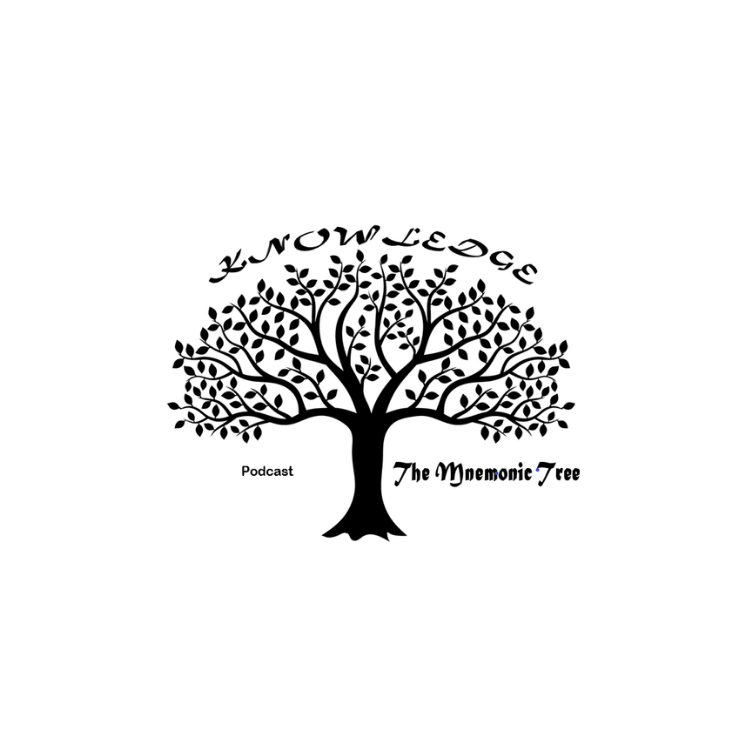Ep. 113: The 7 Continents in Order of Size Mnemonic
Intro
Hello and Welcome to this episode of the podcast, "The Mnemonic Tree", where we add a single mnemonic leaf to our Tree of Knowledge.
I’m Jans you Mnemonic Man and today's episode is on seven continents of planet Earth. Essentially evolving from the one giant land mass called Pangaea about 299 million years ago, the seven continents have been millions and millions of years in the making and continue to create a different picture moving at an average of 1.5 centimetres per year.
Each continent is rich with history, culture, flora, fauna, and magnificent landscapes but only one continent can claim both continent and country status and that is the land down under.
Today’s mnemonic is on the seven continents in order of size from largest to smallest.
So, with that being said, we will begin with a summary from Wikipedia.
Wikipedia Summary
A continent is any of several large geographical regions. Continents are generally identified by convention rather than any strict criteria. A continent could be a single landmass or a part of a very large landmass, as in the case of Asia or Europe. Due to this, the number of continents varies; up to seven or as few as four geographical regions are commonly regarded as continents. Most English-speaking countries recognize seven regions as continents. In order from largest to smallest in area, these seven regions are Asia, Africa, North America, South America, Antarctica, Europe, and Australia.[1] Different variations with fewer continents merge some of these regions; examples of this are merging North America and South America into America, Asia and Europe into Eurasia, and Africa, Asia, and Europe into Afro-Eurasia.
Oceanic islands are frequently grouped with a nearby continent to divide all the world's land into geographical regions. Under this scheme, most of the island countries and territories in the Pacific Ocean are grouped together with the continent of Australia to form the geographical region Oceania.[2]
In geology, a continent is defined as "one of Earth's major landmasses, including both dry land and continental shelves".[3] The geological continents correspond to seven large areas of continental crust that are found on the tectonic plates, but exclude small continental fragments such as Madagascar that are generally referred to as microcontinents. Continental crust is only known to exist on Earth.[4]
The idea of continental drift gained recognition in the 20th century. It postulates that the current continents formed from the breaking up of a supercontinent (Pangaea) that formed hundreds of millions of years ago.
Extracted from: [https://en.wikipedia.org/wiki/Continent]
Mnemonic
The 7 Continents in Order of Size Mnemonic – Asia & Africa are North & South And Europe Alone
(Picture Asia above Africa as most of it is and Europe out there all alone)
1. Asia
2. Africa
3. North America
4. South America
5. Antarctica
6. Europe
7. Australia
Five Fun Facts
1. As many would know back in the old days (about 299 million years ago) there used to be only one continent. That continent or large mass of land was called Pangaea.
2. About 200 million ago this continent began to move apart and very slowly form the continents as we know them today.
During that process of moving apart about 200 million years ago, the continent of Pangaea separated into two new continents called Laurasia and Gondwanaland.
Laurasia was made up of the present-day continents of North America, Europe, and Asia and Gondwanaland was made up of Antarctica, Australia, and South America.
3. The largest continent Asia also contains the highest population with 4.1 billion people. This is approximately 60% of the world’s population and 3.1 billion more than the second most populated continent.
4. It is generally agreed there are seven continents however, it is often argued that Europe and Asia should be one continent called Eurasia. North and South America should also form one continent called the Americas and Africa, Asia, and Europe could possibly be linked to form Afro-Eurasia.
5. The idea of continental drift was put forward by Alfred Wegener in a meeting of the Geological Society in 1912 in Frankfurt, Germany. He then published this theory in his 1915 book “The Origin of Continents and Oceans”. Unfortunately, the idea was ridiculed and forgotten and it wasn’t until the 1960’s when it was revisited with the help of more advanced equipment that his theory was then validated.
Three Question Quiz
Q.1. Which continent is the second most populated continent in the world with 1.1 billion people?
Q.2. Which continent has the most countries?
Q.3. Approximately what percentage of the earth is land? Options are 29%, 34% or 39%
Bonus Q. Which continent has the biggest desert?
Bonus Q. Why are all the land masses surrounded by water?
Mnemonic Recap
The 7 Continents in Order of Size Mnemonic – Asia & Africa are North & South And Europe Alone
(Picture Asia above Africa as most of it is and Europe out there all alone)
1. Asia
2. Africa
3. North America
4. South America
5. Antarctica
6. Europe
7. Australia
Three Question Quiz Answers
Q.1. Which continent is the second most populated continent in the world with 1.1 billion people?
A. Africa
Q.2. Which continent has the most countries?
A. Africa with 54 countries
Q.3. Approximately what percentage of the earth is land? Options are 29%, 34% or 39%
A. 29%
Bonus Q. Which continent has the biggest desert?
A. Antarctica
Bonus Q. Why are all the land masses surrounded by water?
A. Leaking in continents!
Word of the Week
reverence
[ rev-er-uhns ]
noun
a feeling or attitude of deep respect tinged with awe; veneration.
Example
To understand all the internal and external machinations of planet Earth and how it sustains life proffers a reverence and a sense of amazement.
Extracted from: [https://www.dictionary.com/]
https://www.themnemonictreepodcast.com/
https://podcasts.apple.com/au/podcast/the-mnemonic-tree-podcast/id1591795132
https://open.spotify.com/show/3T0LdIJ9PBQMXM3cdKd42Q?si=fqmaN2TNS8qqc7jOEVa-Cw
References
https://www.funkidslive.com/learn/top-10-facts/top-10-facts-about-continents/
https://upjoke.com/continent-jokes
https://www.funtrivia.com/trivia-quiz/ForChildren/Which-Continent-256302.html
https://quizly.co/conquer-7-continents-30-question-quiz/
https://www.kids-world-travel-guide.com/continent-facts.html



